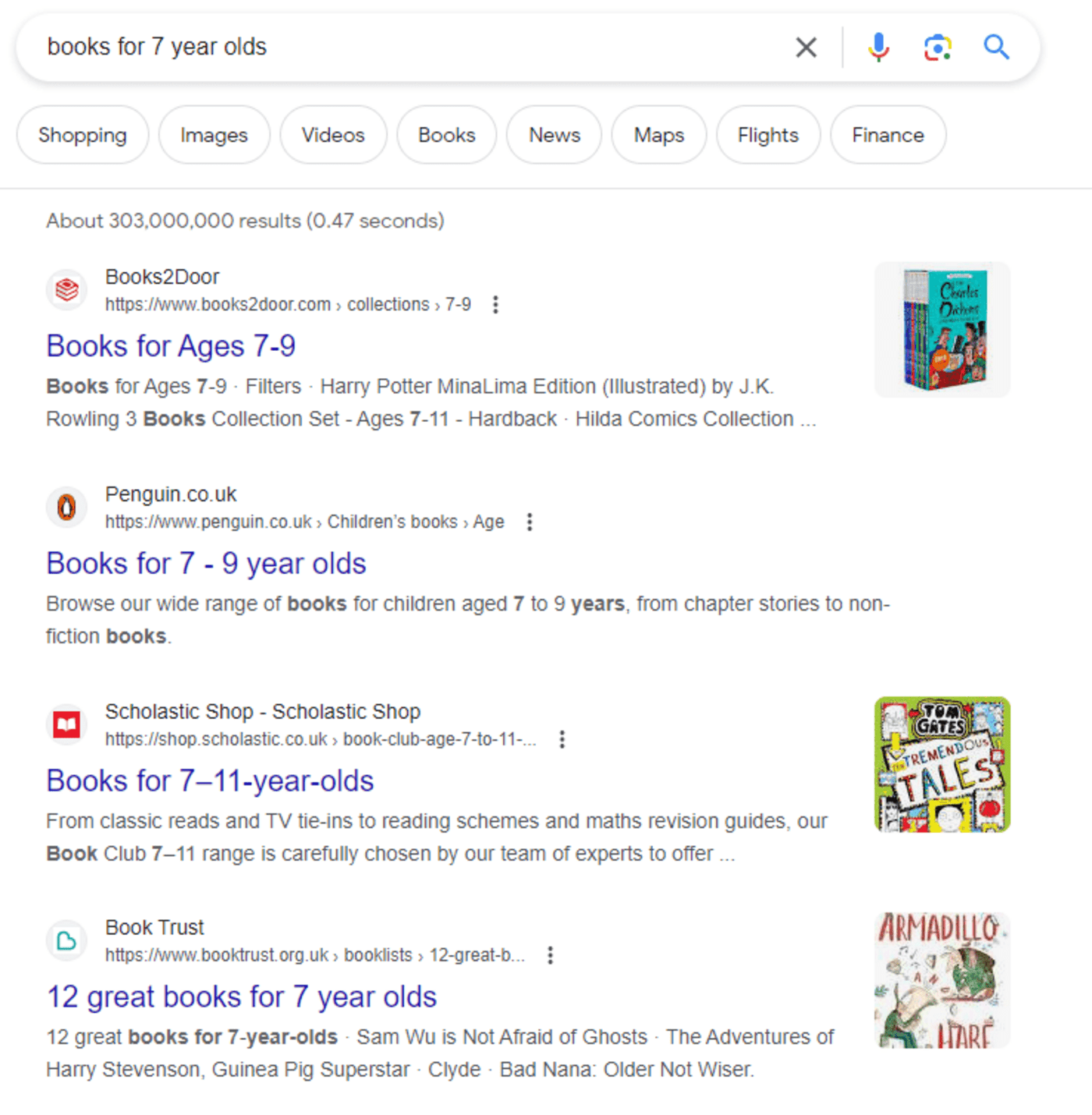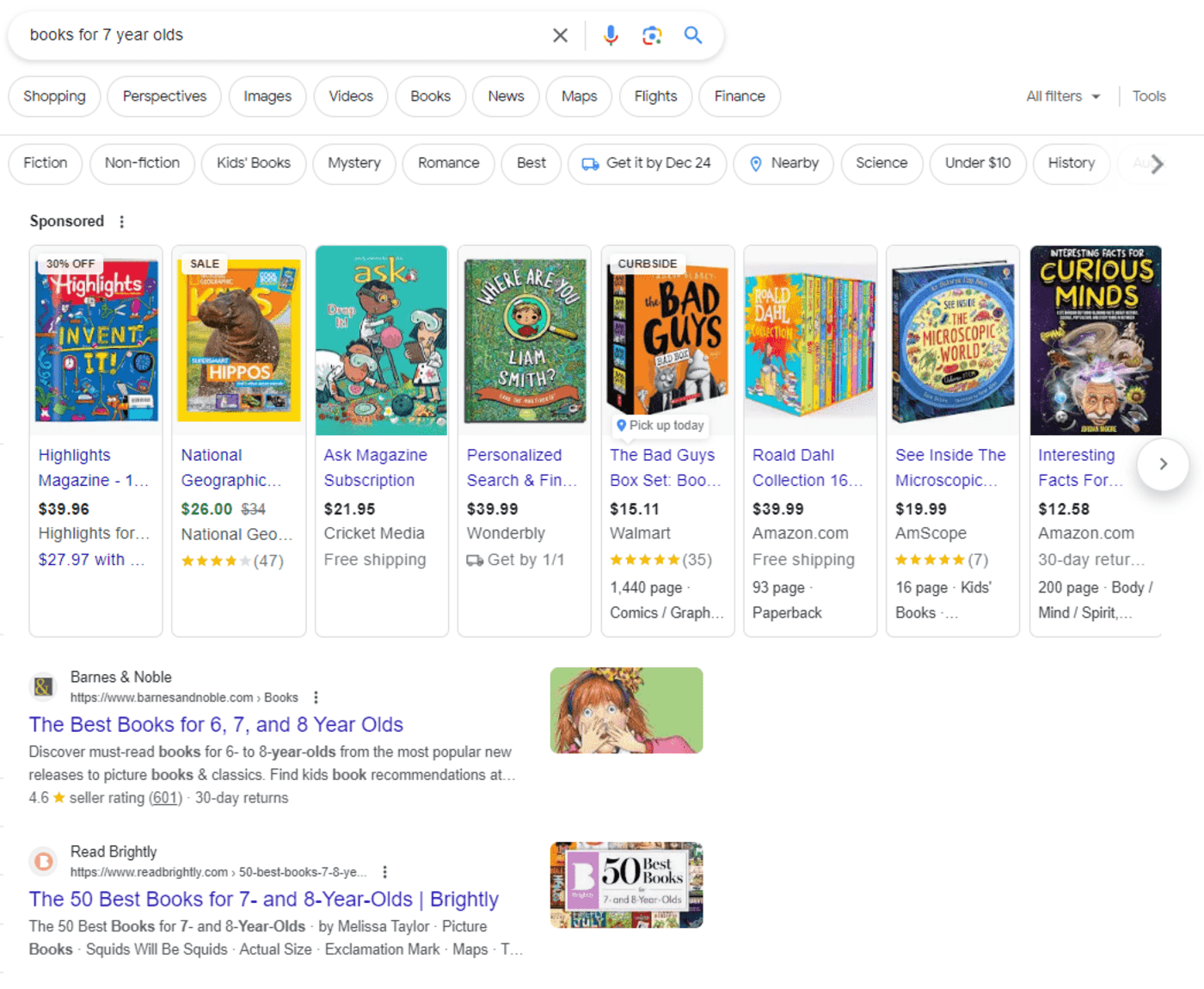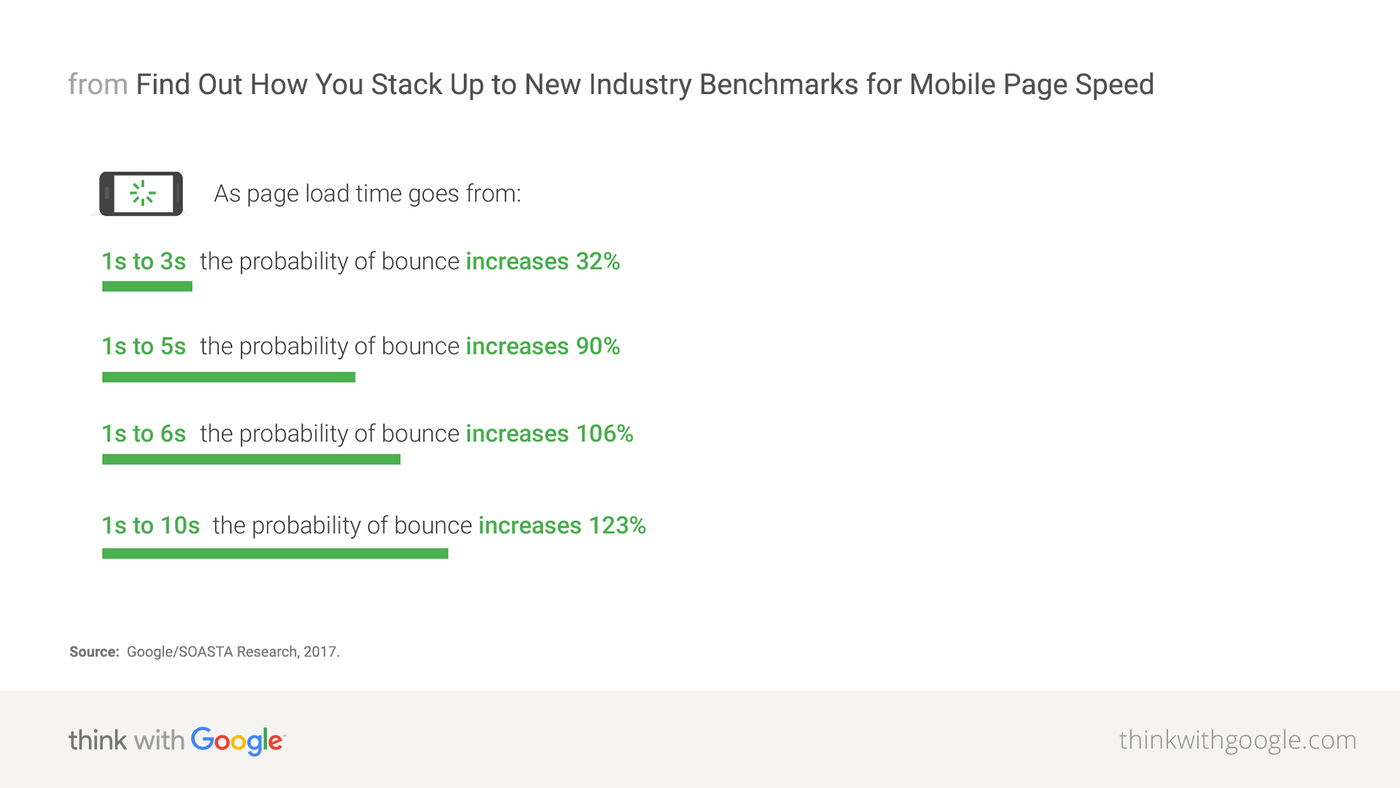The Top 8 SEO Trends to Dominate in 2024
Today, I’ll try to figure out how SEO will transform in the upcoming 2024 and how to prepare your website for these changes.
8 SEO trends to be observed in 2024:
1. Global adoption of Google Search Generative Experience
Google Search Generative Experience, or SGE, is a new AI-powered search that Google is actively testing and developing these days. SGE is not live yet, but it is available in Google Labs for testing.
Here’s how it is going to work: Any time users type in a query and initiate a search, Google shows an AI-generated snippet answering the query at the top of the SERP. The information in this SGE snippet is collected from several sources that Google chooses based on its quality criteria.

Google SGE is expected to enhance user interaction by delivering clear, concise answers, relevant visuals, and a conversational engagement model where users can ask a question and get an instant answer.
Google has been testing and developing SGE for quite a long time, obviously making it ready for an official public release. This can only mean that SGE snippets will be receiving most of the clicks from organic, as they do occupy pretty much of the SERP space.
What to do
While SGE is not live yet, it is better to start preparing your site today to meet the update with guns blazing.
Based on what I see in the test version of SGE, I can assume the following:
First, it is pretty clear that Google chooses trusted and authoritative sources to form SGE snippets. That’s why you should make sure your content includes expert analysis and your website demonstrates topical authority. High-quality backlinks and posts by authors with proven expertise can help you here.
Second, we do know that Google prefers direct, simple language — it is easier to process, so it is better suited for AI training. That’s why your content should be written in a clear, answer-like way. Imagine you’re answering a question and put the info together within a single paragraph. Chances are that Google will pick your content without even changing it. Even if it doesn’t, you can always win a featured snippet, so you don’t lose anyway.
Third, Google pays a lot of attention to pages’ UX and usability. So, it’s high time to focus on page experience optimization to make both Google and users see and enjoy your content. Take care of Core Web Vitals, user-friendliness, and mobile SEO if you haven’t done it yet for any reason.
Finally, do not neglect the traditional SEO best practices we all know and follow, such as on-page and technical optimization.
2. Growing importance of E-E-A-T
This trend logically extends from Google's Search Generative Experience (SGE). If you want Google to pick your pages for SGE snippets, you need to create authoritative content. And authority is signalized by E-E-A-T — Expertise, Experience, Authority, and Trustworthiness.
Actually, E-E-A-T remains an evergreen trend that is discussed every year. And 2024 is not going to become an exception.
There are many factors that contribute to E-E-A-T signals: authors’ expertise, backlinks from credible sources like Wikipedia or relevant niche websites, etc. Mentions by niche experts and opinion leaders also greatly benefit your site’s E-E-A-T. For example, if you write about cooking and restaurants, then mentions from restaurants, food bloggers, and cooks (both local and world-famous) will do.
However, be ready that the pursuit of higher SERP rankings through E-E-A-T signals will ultimately drive up the cost of SEO services because:
- Articles by expert authors will become more expensive;
- Link-building services like outreach will cost more;
- Authoritative media will increase the price for paid posts.
What to do
You should be more attentive and conscious when building and developing personal brands – this will help a lot in E-E-A-T development.
The new reality makes it crucial not only to build professional expertise but also to make people and search engines know about it. Engage actively in your niche by participating in conferences, interviews, podcasts, and other public events — this will enhance your and your brand's visibility and reputation. This is also true about the personal brands of your content authors.
Growing a personal brand takes time. A lot of time, actually. If you don’t feel like you’re willing to invest much effort in brand management, outsourcing the creation of expert content is a way to go, too. Don’t hesitate, though — outsourcing expert content creation will certainly become more costly than it is now.
3. SERP personalization based on user behavior
It looks like Google is going to make SERPs more personalized than ever.
As it is written in Google’s documentation, the search engine will be taking into account the pages and sites users visit most often to put these sites higher in the SERPs.
Another way Google is going to personalize SERPs is the new Follow feature that will let you follow a query to receive relevant and new information on the topic as soon as you open Google.

This way, every single SERP will be different for each user depending on personal preferences, not only on location and language.
Judging by this, it seems that Google SERPs may soon start looking like Instagram or TikTok recommendations, where the content you see is actually the content you interact with most often.
What to do
With behavior factors and personalization taking over, you should probably adopt more digital marketing techniques in your SEO strategy. This way, your content has more chances to appeal to users and become popular and helpful in the eyes of Google.
Here are a couple of things that can help you win the audience’s attention:
- Focus on crafting content that serves the needs and interests of real people. Simply aiming to align with search engine algorithms will not do.
- Monitor and understand user behavior metrics. This is essential for SEO professionals to tailor their strategies to what their audience seeks.
- Apply the appropriate techniques and tools. It’s vital to fine-tune websites and their content for user engagement and behavior.
4. Local SEO becomes more important
As we navigate into 2024, local SEO is going to thrive due to increasing SERP personalization. User location and behavior matter a lot here, so even businesses that are 100% digital will be focusing on hyper-localized digital marketing strategies.
Besides, the search goes mobile more than ever before. People are online on the go, searching for the closest coffee shop, bookstore, or service provider. In this regard, Google prioritizes local information to satisfy user intent in the best way. Consequently, being visible in local search results is crucial for any business to stay afloat.
If you underestimate the power of location in search for any reason, I’ve brought an example. Here’s the SERP from London, the UK:

And here’s how the SERP looks if the same query is searched from Alabama, US:

Moreover, the popularity of voice searches will add to local SEO strategies' global adoption.
As voice searches are pretty conversational, they are local in nature. People are conversing with their devices, asking for recommendations or directions as they would from a local. This conversational shift underscores the importance of optimizing for local SEO, ensuring businesses are part of this local dialogue.
What to do
To optimize your site for local SEO in 2024, consider the following points:
- Google Business Profile: Ensure your Google Business Profile listing is accurate, complete, and optimized for your target keywords.
- Local keywords: Research local search terms that are relevant to your business to incorporate local keywords into your website's content, meta tags, and URLs.
- Local link building: Build local links by getting listed in local directories, partnering with local businesses, and engaging in community events, both offline and online.
- Online reviews: Encourage your customers to leave positive reviews on your GoogleBusiness Profile listing and other review sites. Respond professionally to both positive and negative reviews.
- Local content: Create content that is relevant to your local audience, such as blog posts about local events, news, or activities related to your business.
- Schema markup: Use schema markup to help search engines understand your site's content and location better.
- Social media presence: Maintain an active presence on social media platforms to engage with your local community.
In addition to all the mentioned above, make sure you enable local position monitoring. Track the results of your local SEO efforts in Rank Tracker — this tool can let you check the performance of your local keywords in any location. You can specify an address as detailed as a street. To do that, go to Project Preferences > Preferred Search Engines, find the country you need, and click Add Custom. Then, specify your location:

5. Quality guidelines become stricter
As Google will have to choose content for SGE snippets, it will need to crawl thousands of pages and decide on their quality. Only high-quality pages will be used in Search Generative Experience. In this regard, the guidelines for quality content are very likely to become stricter and, maybe, quite different from what we have today.
For example, we have already observed the transformation of the concept of keywords. In the early days of SEO, keywords were used unnaturally and were actually overused, but it worked. Later, search engines became far more sophisticated — they learned to understand the intent and the context behind the query. Besides, spam markers appeared to help filter low-quality pages. As a result, the keywords in today’s SEO have rather transformed into entities.
The same is happening right now to backlinks. They are still one of the key pillars of SEO, but the requirements for their quality are becoming stricter. To be considered good and useful, a backlink should be coming from a niche-relevant, powerful page, and the context of link placement should be appropriate, too.
In other words, Google keeps shifting towards quality instead of quantity at a more hectic pace than ever.
What to do
Take care of your website, audit it regularly, refine content, and be aware of major SEO trends and Google updates — in other words, carry on with your SEO routine.
Regularly update your pages, focusing on enhancing their appeal to users and search engines. WebSite Auditor is a valuable tool for this task. It scans your pages, providing insights into their status and the general health of your site. You'll receive specific advice on what needs improvement and where to make these changes.

Do regular backlink audits, run link-building campaigns, and pay attention to your site’s internal linking. This can help you build ties between your pages and the entities on them, thus making your site an ecosystem rather than a bundle of separate pages.
6. UX optimization is a priority
User experience optimization is probably not a brand-new trend, but 2024 will make it a priority.
First, the development and adoption of SGE will set the stage. Google will need to scan a page to decide if it’s good enough for SGE snippets. If a page’s content is blocked by heavy, non-readable visuals, then Google may consider that page empty. It’s clear that a page like this will never get to an SGE snippet.
Then, the loading speed of your website already affects user satisfaction greatly. Slow-loading sites are a big no-no in Google's eyes, as users cannot interact with them easily. Optimizing your website's speed is not just about appeasing search engines; it's about valuing your users' time.

Another key aspect is navigational ease. Can users find what they need without getting lost in a maze? Simplified navigation, clear call-to-actions, and a structured, stable layout will be critical in keeping users engaged and reducing bounce rates.
Accessibility cannot be overlooked either. Inclusivity in web design ensures that your website is usable on any device, be that a mobile device or a laptop.
What to do
Don’t neglect Core Web Vitals optimization. Keep (or make) your site visually appealing but light, do not overuse intrusive pop-ups or banners, and take care of navigation simplicity. All of this will make loading times faster, which only benefits SERP rankings and site indexability.
WebSite Auditor’s PageSpeed module will be of great help in terms of user experience and Core Web Vitals optimization. The tool will deeply analyze your site and highlight every detail you need to fix.

7. Zero-click searches take over popularity
Google, Bing, and others are continually refining their algorithms to provide instant answers, featured snippets, and knowledge graphs right in the SERPs. This evolution is aimed at enhancing user experience by offering quick, precise answers to queries. Consequently, users are finding what they need faster and more efficiently, often without the actual need to visit a website.
This trend has profound implications for SEO strategies. Traditional click-through rates may no longer be the sole metric to evaluate online success. Instead, visibility in these zero-click spaces becomes crucial. It's about being the first and most concise answer to the user's query.
In this regard, keyword strategy must evolve. It's not just about ranking for any keyword; it's about targeting those that power these zero-click answers.
What to do
It’s time to make your pages get these rich snippets in SERPs. Doing so will not only help you win zero-click positions and visibility but also increase your chances of being selected for SGE snippets in the future.
To get a rich snippet, your page’s content must be clear to Google. The easiest way is to apply the relevant Schema markup — this will help win content-specific features like recipe, video, article, etc.

Besides, do not neglect using lists where relevant — Google finds them easy to read, so it shows them quite often.

One more tip. If you provide a definition for a term or explain anything, make an explanation or description fit a single paragraph (or a single
In addition, you can explore keywords that trigger SERP features and incorporate them into your content strategy. In Rank Tracker, as you do keyword research, go to Rank Tracking > Tracked Keywords, and look at the Google SERP Features column:

Pay attention to the icons colored in gray, as this means that your site does not have this feature yet. Create the appropriate content and watch your progress.
8. Video SEO becomes a trend
With the rising consumption of video content, search engines are prioritizing video in their results. This shift indicates that businesses can no longer afford to overlook video as a critical component of their SEO strategy.
What makes video SEO so crucial? Firstly, it's about visibility. Videos are more engaging and shareable, catching users' attention quickly. Optimizing videos ensures that they appear not just in video searches but also in standard search results, providing a wider reach.
Moreover, with advancements in AI and machine learning, search engines are becoming better at indexing and understanding video content. In this regard, incorporating videos into your SEO strategy is not just about creating content; it's about optimizing it with the right keywords, descriptions, and tags.
Embracing video SEO is an opportunity to connect with your audience in a more dynamic way and enhance your overall online presence. The key is to create engaging, relevant, and optimized video content that aligns with your audience's needs and preferences.
What to do
Make videos a part of your content strategy. Yes, they require more time and preparation, but the results are worth it.
First, find keywords that are most likely to trigger video results. To do this, open Rank Tracker and go to Keyword Research > Autocomplete Tools. Enter a couple of seed keywords and select YouTube Autocomplete — this option will let you find queries that are searched on YouTube most often, which means they are perfect for video content:

Follow YouTube SEO best practices — provide metadata and closed captions, choose relevant tags, and add timestamps. Timestamps can help Google rank even parts of your videos that match a certain query.
Watch our video guide on how to make a perfect YouTube SEO strategy
Take care of the quality of your videos. As Google is actively training its AI, it will prioritize high-resolution videos — they are easier to understand, so Google will prioritize them for AI training.
To sum it up
All in all, global AI adoption has already had a great impact on SEO and will keep doing so in 2024. It looks like these AI trends will make Google — a paradox — more human-oriented in terms of better usability and personalization.
At least, it looks like this today. Sounds too simple to be true, but all we can do is keep websites nice and clean, create expert content, and monitor new SEO trends that take on the stage.
How do you think SEO will actually change in 2024? Share your ideas in our Facebook community.
Happy optimization!















